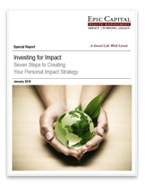Market Update: Glut of Treasury Issuance Coming
Jun 7, 2023
 It seems like Treasury investors can’t catch a break. Last week, investors were concerned about a U.S. default (not a real risk, in our view) and this week, there is a lot of focus on the glut of Treasury issuance coming to market now that the debt ceiling drama is behind us. So should investors be worried? We don’t think so, but first, the specifics.
It seems like Treasury investors can’t catch a break. Last week, investors were concerned about a U.S. default (not a real risk, in our view) and this week, there is a lot of focus on the glut of Treasury issuance coming to market now that the debt ceiling drama is behind us. So should investors be worried? We don’t think so, but first, the specifics.
As part of the deal, the Treasury Department has unfettered borrowing capacity until January 2025. And borrow it plans to do. After draining its primary general account to keep paying its obligations, the Treasury is expected to issue at least $1.1 trillion in net new Treasury bills (T-bills) over the next few quarters to replenish its account as well as fund normal government operations. So, with that much issuance expected over a relatively short time horizon, the questions really become what impact will that have on T-bill prices and what impact will that have on general market liquidity?
Regarding the impact on T-bill prices, historically, T-bills, which have maturities of up to one year, have been easier for the market to digest. In fact, there’s been very little correlation between supply and prices. So, while issuance will be supersized this time around, we don’t expect meaningful disruption in the T-bill market.
The impact on market liquidity, however, could be a bigger risk. There are three primary domestic buyers of T-bills: banks, nonbanks (mostly households), and money market funds. Of those three primary buyers, nonbanks and money market funds can most directly impact market liquidity. So, with the amount of T-bill issuance coming to market, the impact on market liquidity will depend on who the primary buyers will be. However, as seen on the chart below, there are two avenues in which liquidity will be impacted: bank reserves and assets held at the Federal Reserve’s (Fed) overnight reverse repo facility (ON RRP).
Bank reserves represent the minimum amount of deposits a bank must have on hand. And when bank reserves fall below a certain threshold, bank lending is impaired. Nonbank investors generally fund purchases through the bank reserves channel. The Fed’s ON RRP facility allows certain money market funds to borrow from or lend to the Fed, using government securities as collateral, and agreeing to buy or sell back those securities at rates set by the Fed, on an overnight basis. This channel has very little impact on market liquidity.
So, if the primary buyer base is nonbank investors, bank reserves will drop. And given the earlier regional banking concerns and the ongoing concerns around “deposit flight”, if bank reserves fall too much, it could negatively impact the economy and markets. However, if the primary buyer base is money market funds, the impact would be negligible. Certainly, the buyer base will be a mix of both (plus non-U.S. investors that will not impact market liquidity either) but according to analysis from Deutsche Bank, its baseline scenario is that ON RRP drainage starts at 40% of the overall liquidity reduction over the next few months and accelerates to 60% in the fourth quarter and 80% in 2024. That would put reserves at around $2.5 trillion, which would not represent a level that would be deemed concerning for the Fed. In fact, this is consistent with Fed expectations.
Bottom line is that as long as U.S. Treasury securities are regarded as risk free securities, there is always going to be demand for T-bills. The questions though are at what price and who will those buyers be? In our view, there is currently an abundance of liquidity in the market that can be used to absorb the glut of issuance coming to market in the next few quarters without a disruption to prices or liquidity.
For more insights and resources, be sure to sign up for our Weekly Market Commentary. Follow our YouTube channel where we regularly post our Epic Market Minute videos. Follow us on LinkedIn, or like us on Facebook. And as always, please don’t hesitate to reach out to a dedicated service professional at Epic Capital.
IMPORTANT DISCLOSURES This material is for general information only and is not intended to provide specific advice or recommendations for any individual. There is no assurance that the views or strategies discussed are suitable for all investors. To determine which investment(s) may be appropriate for you, please consult your financial professional prior to investing. Investing involves risks including possible loss of principal. No investment strategy or risk management technique can guarantee return or eliminate risk in all market environments. For more information on the risks associated with the strategies and product types discussed please visit https://lplresearch.com/Risks References to markets, asset classes, and sectors are generally regarding the corresponding market index. Indexes are unmanaged statistical composites and cannot be invested into directly. Index performance is not indicative of the performance of any investment and do not reflect fees, expenses, or sales charges. All performance referenced is historical and is no guarantee of future results. Unless otherwise stated LPL Financial and the third party persons and firms mentioned are not affiliates of each other and make no representation with respect to each other. Any company names noted herein are for educational purposes only and not an indication of trading intent or a solicitation of their products or services. All information is believed to be from reliable sources; however, LPL Financial makes no representation as to its completeness or accuracy. Government bonds, notes and Treasury Bills are guaranteed as to the timely payment of principal and interest and, if held to maturity, offer a fixed rate of return and fixed principal value. Bonds are subject to market and interest rate risk if sold prior to maturity. Bond values will decline as interest rates rise and bonds are subject to availability and change in price. For a list of descriptions of the indexes and economic terms referenced in this publication, please visit our website at lplresearch.com/definitions. Securities and advisory services offered through LPL Financial, a registered investment advisor and broker-dealer. Member FINRA/SIPC. Not Insured by FDIC/NCUA or Any Other Government Agency | Not Bank/Credit Union Deposits or Obligations |Not Bank/Credit Union Guaranteed | May Lose Value
Tags: Current Events
More Insights
Few terms in personal finance are as important, or used as frequently, as “risk.” Nevertheless, few terms are as imprecisely defined. Generally, when financial advisors or the media talk about investment risk, their focus is on the historical price volatility of the asset or investment under discussion.
As Americans get their grills and beach chairs ready for the July 4th holiday, the stock market and the weather across much of the country have both been on heaters. Stocks and bonds continue to effectively navigate a complex policy landscape shaped by evolving trade dynamics, geopolitical tensions, and fiscal stimulus. The market’s resilience in … Continue reading “Market Update – America Gets Record High Stock Prices for Its Birthday”
Birthdays may seem less important as you grow older. They may not offer the impact of watershed moments such as getting a driver’s license at 16 and voting at 18. But beginning at age 50, there are several key birthdays that can affect your tax situation, health-care eligibility, and retirement benefits.
During times like these when geopolitical headlines can be unsettling for investors, we at LPL Research like to remind ourselves of one of our key investing principles. Markets have always faced challenges —ranging from geopolitical conflicts and economic downturns to natural disasters, political upheaval and health crises. These events often trigger short-term volatility and shake … Continue reading “Why Long Term Investing Beats Selling in Volatile Times”
Are you concerned about the inheritance taxes your heirs may have to pay? Then you may want to consider creating charitable lead trusts.
Services
Epic Capital provides the following comprehensive financial planning and investment management services: Learn More >



 Top of Page
Top of Page











